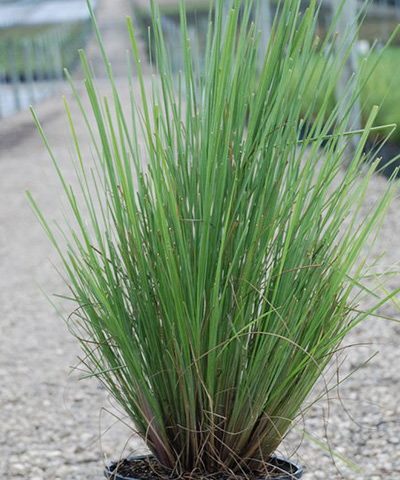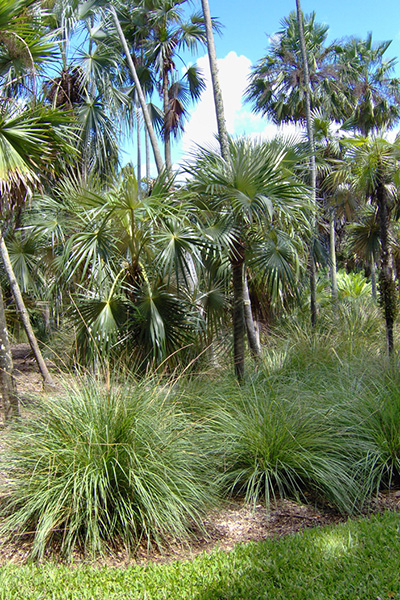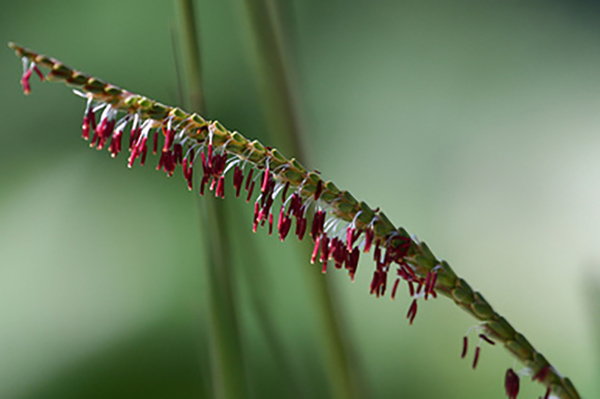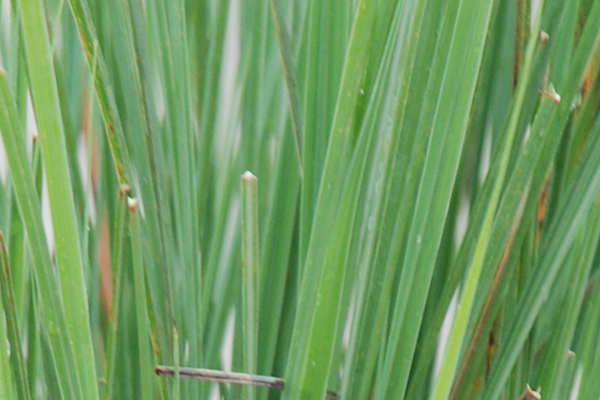Dwarf Fakahatchee Grass

Dwarf Fakahatchee Grass Potted
Tripsacum floridanum
Dwarf Fakahatchee Grass, or commonly known as Florida Gamagrass, is a smaller relative of Fakachatchee Grass (Tripacum dactyloides). This Florida native grass is easy to grow and low maintenance which makes it a great addition to many landscapes. It acclimates to both dense and light soils and is one of the most shade tolerant grasses, growing best in full sun or light shade. Another great feature is its tolerance to both wet soil conditions and droughts.
This is an evergreen clumping grass with thin, slender blades. Distinctive rust-colored flower spikes stand a little taller than the foliage. It prefers wet soil conditions but is also quite drought tolerant. It is one of the most shade tolerant grasses, and naturalizes readily in most conditions. This variety can be distinguished by a couple characteristics. It has noticeably more narrow blades than its non-dwarf relative and also a smaller mature height of about 2 to 3 feet. It is important to know which Fakahatchee grass you are purchasing, because they have quite the size difference.
Dwarf Fakahatchee Grass works great as an accent in ground cover beds, a stabilizer for banks and steep slopes and a nice edging along streams and ponds. Dwarf Fakahatchee Grass is a very functional plant, yet it is not being used as much as other varieties. In fact, it is considered a threatened species in Florida by the Endangered Plant Advisory Council.

Ornamental Characteristics:
Native Origin:
Florida
Common Names:
Florida Gamma Grass, Florida Tripsacum
Description:
Hardy Range: 8 – 11
Mature Height: 2 – 3’
Mature Spread: 2 – 3’
Growth Rate: moderate
Growth Habit: round
Texture: fine
Density: moderate
Ornamental Characteristics:
Dwarf Fakahatchee Grass is an herbaceous perennial that forms a dense, upright clump of long grass-like leaves that grow from a short, thick, underground rhizomes. Blades are noticeably narrow and grow to a height of about 3 to 4 feet and spreads to form a clump up to 6-feet wide. The flowers appear in somewhat showy spikes, with rust colored anthers. These spikes appear in the spring and summer.
Environment:
Soil: extended flooding; acidic; slightly alkaline; sand; loam; clay;
Salt: moderate
Exposure: partial sun; partial shade



